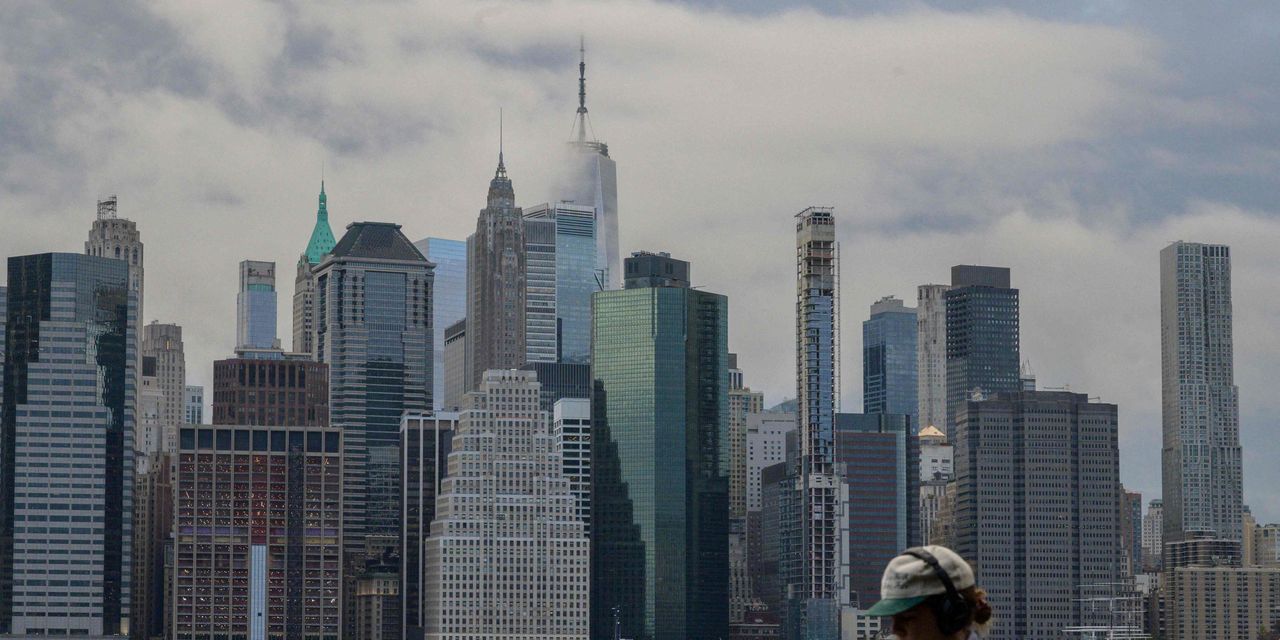The financial fallout from half-empty U.S. office buildings has begun to be reflected in prices for bonds backed by luxury office buildings.
From New York City’s famed Park Avenue to San Francisco’s California Street, properties long considered fortress investments are reeling as efforts to return more staff to office buildings in big cities stall.
Recent Wall Street “bid lists,” or email blasts from dealers to potential investors, reflect a souring mood for debt on signature office buildings. They peg the value of several Triple-A rated bonds that helped finance top-notch offices at discounts of about 85 cents on the dollar to about 93 cents.
“It’s not a rosy picture for some landlords,” said Mike Sheldon, senior portfolio manager at Income Research + Management, a Boston-based fixed-income firm that oversees about $92 billion in assets.
“If you’ve got a property that’s Tier 1 and looks strong from an occupancy perspective, with long-term leases in place, those properties are obviously going to hold up a lot better.”
Reality check
Before the pandemic, investors snapped of slices of $1 billion dollar debt deals for glitzy office buildings at Hudson Yards in Manhattan and other iconic buildings that shape the U.S. skyline.
That led to a boom in issuance of single-asset, single-borrower (SASB) bonds, a segment of the commercial mortgage-backed securities market. Often the deals were done at peak property valuations and came with near record low interest rates.
Now, with flexible work arrangements and the end to an era of cheap and abundant debt, lenders have pulled back on new financings, even for office buildings owned by well-heeled developers, pension funds and foreign governments.
On one hand, long-term leases have masked some of the pandemic challenges and its aftershocks, keeping delinquencies low. But that isn’t expected to last with the physical U.S. office occupancy rate still only 40%-65% so far in 2023, per Jones Lang LaSalle Inc.
JLL,
data.
Uncertainty around future office needs makes it hard not to worry about the fate of even the best properties for tenants.
“There have been a lot of negative headlines on the office, and we are seeing it, and experiencing parts of it, simply by being in an office,” said Morris Chen, a portfolio manager at Jeffrey Gundlach’s DoubleLine.
“There’s clearly going to be opportunities, but the outcomes can be very binary,” he said.
Equity check
With falling property prices and higher financing costs, borrowers still have some options when looking for a loan extension or fresh funding, but it may require putting in their own money.
Office-building owners funded through the bond market could need to put in an extra 25%-40% of equity to be financed in the sector, according to an analysis in March by Cohen & Steers.
The focus has been on the wreckage in store for older, obsolete office buildings as many companies shrink their office space, but owners of trophy assets also have been struggling in recent months to find long-term financing solutions as their debt comes due.
Read: Losing the trophy? A $45 billion mortgage bill is coming due for some of America’s signature commercial properties
Developer Tishman Speyer, which financed the Colgate-Palmolive building at 300 Park Avenue in Manhattan in 2013 with a group of investors, recently requested an extension of its maturing loan.
Triple A bonds tied to the property were circulated on a bid list Tuesday at price talk that range from 82 cents on the dollar to about 94 cents, according to Empirasign. Fitch Ratings downgraded the Triple A class to BBB- in early May, or a notch above high-yield, or “junk bond” status.
Chen said the downgrades were a newer, additional factor investors had been trying to price in.
Tishman said they requested a transfer of the loan to a special servicer, or a lender who handles problems with property debt in bond deals, in advance of the loan’s August maturity, “given the current credit market dislocation,” in an emailed statement.
Mezz stress
Deutsche Bank researchers said the Fitch downgrade of bonds on the Colgate-Palmolive building should translate to a property value of about $369 million, versus the original appraisal of $1 billion when the debt was originated.
A strategy emerging for owners of top-quality office buildings has been to bide their time until the Federal Reserve starts to cut interest rates, often by seeking loan extensions. Many also want to avoid selling into a sinkhole, where prices could be vulnerable to as much as a 50% drop, depending in part on location.
In San Francisco, a 22-story office tower at 350 California Street, the heart of the city’s financial district, reportedly sold for about 70% less than its valuation in 2020 earlier in May.
In a positive sign for New York, borrowers of $1 billion of debt on the Seagram Building in Manhattan recently paid a fee to receive a loan extension that could push its maturity date to 2025, according to Trepp LLC, which tracks the commercial mortgage-backed securities market.
But investors with riskier bets tied to the fate of one iconic building or deep-pocketed borrower appear less optimistic.
Valuations on some mezzanine bonds, which would be hit by losses before their Triple A counterparts, has been as low as 66 cents on the dollar as of December, down from 102 cents in 2021, according to Empirasign.
“You can make a lot of money buying bonds at 60 cents on the dollar, if you are right,” Chen said. “Clearly, if you are wrong, it might not be pretty.”
Read the full article here













